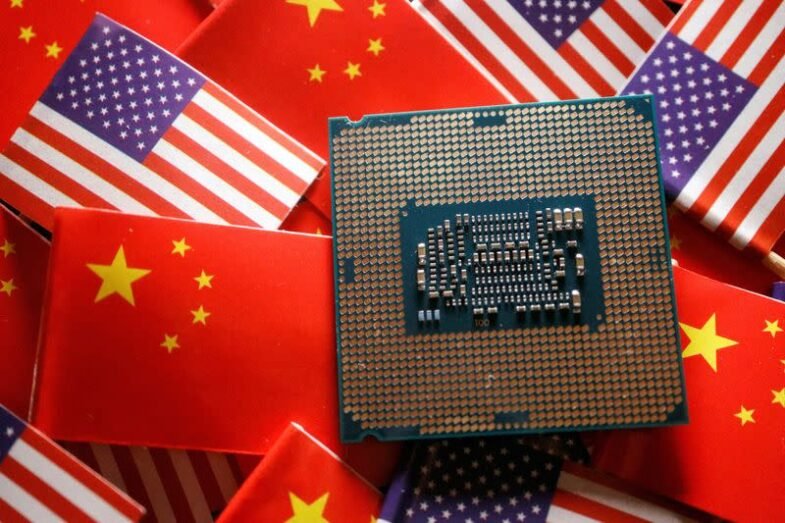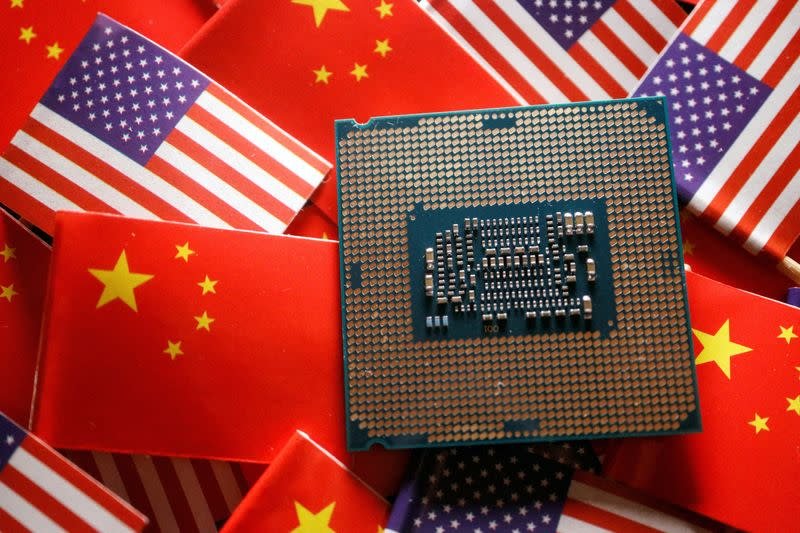Germanium and gallium are chemical elements that are extracted from alumina and zinc minerals, with gallium produced during the separation of brown coal.

China is retaliating against semiconductor export restrictions by implementing a license system for the export of gallium and germanium, essential elements in chips, solar panels, and fiber optics. This move is aimed at ensuring national security.
It will be difficult for China to secure a steady supply of materials for cutting-edge technologies like high-performance chips and lithography machines, despite government approval.
This action was taken following years of export restrictions, especially for significant businesses like Huawei. According to Kevin Klyman, a technology researcher at the Harvard Kennedy School’s Belfer Center for Science and International Affairs, China’s announcement is retaliation as the technology war intensifies.
Although they immediately increased the cost of gallium and germanium, China’s new restrictions are not likely to have the same negative effects on the US that American export restrictions have had on that country.
Despite their significance, these two raw materials still only have a few specific uses in the semiconductor sector. While China dominates the production of gallium and germanium, other nations may be able to increase their own output and export enough to offset China’s supply.
Germanium and gallium are chemical elements that are extracted from alumina and zinc minerals, with gallium produced during the separation of brown coal. Beijing selected these substances because of their significance in the production of semiconductors, especially germanium, which is known for its high electrical conductivity.
While germanium is widely used in fibre optics, infrared optics, and solar cells, gallium is used in radio communication equipment and LED displays. These qualities also make them useful parts for contemporary weapons.
China produces 60% of germanium and 90% of gallium, according to Antaike, but lacks capacity for later-stage semiconductor or optical products. As a result, a significant portion is exported to Japan and Europe.
The price of gallium and germanium has increased, as have the stock prices of the Chinese companies that produce them, as a result of the new export licence regime, which is set to take effect on August 1. American semiconductor wafer manufacturer AXT intends to submit an application for an export licence in order to continue operating.
The difficulty of obtaining an export licence will determine the effect of this licencing system. There is no proof that licences won’t be granted, and it’s possible that US defence contractors won’t either.
China’s capacity to manage permit holders will give it more negotiating power with nations that depend on expensive chipmaking machinery, such as Japan and Korea. The US government has been pressuring allies to limit China’s access to such equipment, and export restrictions have already been implemented by Japan and the Netherlands. China is under pressure but has been unable to come to an agreement with the US regarding these limitations.
Aggressive US policies, which Secretary of the Treasury Janet Yellen announced during China’s visit, could fragment the global semiconductor industry in 2023.
Experts claim that Beijing sent a message to the US government that it would regulate exports in important industries like gallium and germanium in order to entice the US and its allies back to the negotiating table.
According to Xiaomeng Lu, director of geotechnology practise at the Eurasia Group, there is also a strategic worry that keeping hold of these vital materials might benefit China’s interests in the event of a conflict.
At this point, Russia has largely been excluded from the global tech ecosystem. But they still have food and oil, which is how they managed to survive. The worst-case scenario that the Chinese leadership considers is that, Lu claims. “We need to hold the raw materials we have in reserve as much as we can in case the worst case scenario occurs.”
Although the Chinese government may be taking control of the supply chain, foreign importers of gallium and germanium may look for more secure sources as a result of the uncertainty surrounding the licencing regime.
Export limitations might not ultimately be advantageous to China. This action, which compels suppliers to diversify their supply of these essential minerals and reinterprets mining value in North America and other regions, is probably welcomed by the US government.
Congo and Russia mining companies plan to increase germanium production to meet demand. Western countries like the US, Canada, Germany, and Japan also produce these materials.
However, ramping up production may be challenging due to pollution from the mining process, which initially led to offshore production to China.
Chang suggests the West must accelerate innovation in rare-earth metal separation and purification processes to avoid relaxation of environmental regulations restricting traditional techniques.
Germanium and gallium can be mined elsewhere, but cutting-edge technologies are more restricted in availability. EUV lithography machines, which were barred from export to China, are made by a single company. Export control is less effective if technologies are available in other markets, according to associate professor Sarah Bauerle Danzman at Indiana University Bloomington.
She claims that the US has additional advantages, such as the dollar’s importance on a global scale, that help export control operate more effectively. Because businesses are concerned about being penalised if they don’t comply, the US chip curbs have an extraterritorial impact. They might not be eligible for payments made in US dollars.
China’s export controls could negatively impact its economy, as it relies more on export trade than the US. Restricting Chinese companies from global collaboration will undermine their business.
To execute this strategy, China must stop exports to the US and globally, unless it secures agreements with Japan, South Korea, and the EU to avoid US trade. China has previously restricted the export of critical raw materials. China has attempted to impose restrictions on the export of raw materials before.
In 2010, it cut the amount of rare-earth elements that were available for export by 40%, citing a desire to protect the environment. The nation was charged with unofficially prohibiting rare-earth exports to Japan due to a territorial dispute the same year.
LED lights, batteries, magnets, motors, and other products all make use of rare-earth elements. In a World Trade Organization dispute, the US, EU, and Japan contested the quota. China’s arguments for environmental protection did not persuade the settlement panel, which decided against China and requested that its restrictions be lifted in 2015.
China probably won’t need to worry as much, but the Japanese government may bring up the issue once more with the WTO. Trade protectionism and self-preserving supply-chain policies during the pandemic era have cost the organisation its authority. China is currently looking for a more complex policy justification for its actions.
When it comes to export restrictions, China probably won’t stop at gallium and germanium. Former Chinese vice minister of commerce Wei Jianguo was quoted as saying that “this is just the beginning of China’s countermeasures, and China’s toolbox has many more types of measures available” in the state-owned publication China Daily.
Even though they are significant, germanium and gallium do not represent the worst damage China could cause in terms of raw materials. According to Lu, “it’s giving the global system a little pinch and demonstrating that we have the potential to later cause a bigger pain.”
China may face challenges in sourcing substitute materials for rare-earth elements and electric-vehicle battery materials due to their high use in large quantities. These materials pose a significant threat to China’s future negotiation position.
